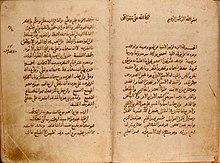
Back أوتوجراف Arabic اوتوگراف AZB Автограф Bashkir Autograf Czech Autograph German Autograaf Estonian כתב יד (מקור) HE Autografo IO Autografo Italian 直筆 Japanese


An autograph or holograph is a manuscript or document written in its author's or composer's hand. The meaning of "autograph" as a document penned entirely by the author of its content (as opposed to a typeset document or one written by a copyist or scribe other than the author) overlaps with that of "holograph".
Autograph manuscripts are studied by scholars (such as historians and paleographers), and can become collectable objects. Holographic documents have, in some jurisdictions, a specific legal standing.[not verified in body]
Related terms include archetype (the hypothesised form of an autograph), and protograph (the common ancestor of two closely-related witnesses which ultimately descended from the same autograph). For example, the Novgorodsko-Sofiysky Svod is the hypothetical protograph of the Novgorod Fourth Chronicle (NPL) and Sofia First Chronicle, both of which are extant textual witnesses of the lost archetype, the Primary Chronicle (PVL). A paradosis is a proposed best-reading, postulated when attempting to reconstruct the autograph.
- ^ Hirtenstein, Stephen. the Master's hand : a preliminary study of Ibn 'Arabi's holographs and autographs. OCLC 1049200830.
© MMXXIII Rich X Search. We shall prevail. All rights reserved. Rich X Search